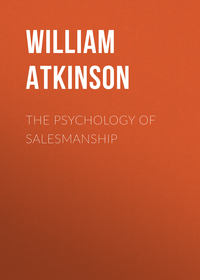 полная версия
полная версияMind and Body; or, Mental States and Physical Conditions
Dr. T. A. Borton, in an address before the Indiana State Medical Society, said: “The subject which I desire to present to you to-day has to do with the influence of the mind over the functions of the body. Its silent, unobserved force results in producing pathological conditions, and those, by reflex action, excite morbid sensibilities of the mind and thus derange the nerve centres, resulting in a changed condition or over-excitability of the nerve energies, which becomes a secondary diseased condition in the form of different types of neurasthenia. I have been interested in this subject for many years, and in my practice have had extended opportunities for making observations as to the potency of the mental and suggestive pathology bearing on this subject. I would especially refer to the healing of the body through these mental forces, changing healthy, normal conditions into unhealthy or diseased conditions and vice versa. These changes are not miraculous, but proceed from natural causes in the operation of the mind, as a therapeutic agency, operating through the functions of the body, sometimes as a tonic or stimulant, warding off diseases under the most exposed conditions, defending and holding the system in a state of health, while those void of these mental assurances become victims to the ravages of disease through contagion or infection. This protective mental force of the mind has been demonstrated many times in hospitals and other places where contagious diseases were prevailing. The mental force possesses a protective power when rightly exercised beyond what is usually conceded, not only in the way of defense; but also in correcting disease when in existence. I believe these to be much greater than has been generally admitted or understood… We all know how difficult it is to get good results from medication in which our patients have no confidence, and it is an established fact that we get better results from drugs which are given with the patient’s knowledge of their intended effect. I have often produced desired results from means entirely inert, stating the desired and expected effect of its administration. I have frequently quieted the severest pain by injecting pure water into the arm of the patient.”
Dr. G. R. Patton, in an address before the Wabasha County (Minn.) Medical Society, said: “As Bacon said, ‘Faith, confidence, belief and hope are the working forces that make the cure – that work the miracle.’ The mind as a dynamic force exerted over the functions of the body has been, doubtless, operatively manifest from the cradle of our existence. By the phrase, ‘the mind as a dynamic force,’ I refer to the various forms of suggestion as well as to various affective faculties of the mind, or those states caused by the sympathetic action of the brain, such as faith, confidence, belief, imagination, emotions, hope and the like. Any or all of them may become active over the bodily functions… As instance of the mental impression acting upon observable functions revealed through the capillary circulation as revealed to the sight, I will mention blushing or pallor of the face, depending upon the theme presented to the thought; the mouth watering on the sight or thought of tempting food; the flow of tears from words or thoughts that excite grief; nausea or vomiting from a sickening spectacle; sexual excitement from obscene thought or lascivious sights. Instances might be multiplied. And is it not a fair inference, indeed, that through the vasomoter nerves, the internal viscera may be subject to like effects through mental impressions, and that thus acute as well as chronic congestive ailments thereof may be favorably influenced or even cured thereby?.. It is my conviction that recognition of the power and usefulness of mental dynamics, including all forms of suggestion over physiological and pathological processes in combating diseases, is unquestionably the most impressive advance in modern medicine. Mental influence alone may diminish or increase the activities of the physiological processes to the extent of removing the pathological effects of disease… A celebrated medical teacher, after an exhaustive dissertation over a case was leaving the bedside without prescribing any treatment when the house physician asked what should be given the patient. ‘Oh,’ said the professor, ‘a hopeful prognosis and anything else you please.’ To this he added, ‘the doleful doctor will be a failure, while the hopeful one will prove a winner from start to finish.’ It is reasonably assured that ultimately the physician will become not so much the man behind the pill as the judicious advisor, the wise counsellor, gently leading the sick ‘into green pastures, beside still waters,’ through paths that lead onward to recovery, assisting nature at times, if needs be, with a big bread pill.”
Dr. Herbert A. Parkyn, the well-known authority on suggestive therapeutics, says: “Certain results will follow certain thoughts, and in every instance that it is possible to get the patient to think the thoughts we desire, we secure the results we desire. It is the work of the suggestionist to place these thoughts in the mind of the patient so that he is bound to think them, and this can be done to some degree, if not perfectly, in every case. It is well to have faith, but faith is not absolutely necessary at the outset. It is time enough for the patient to have faith in the treatment when he can perceive the benefit he is receiving. Understanding the mental and physical changes which follow a certain thought, the suggestionist is able to bring about those mental or physical changes, by using direct suggestion in such a way that his patient is bound to think the thoughts which will produce the results. A man may not have faith in the statement that the thought of lemon juice will stimulate the flow of saliva, but if he will imagine for a moment that he is squeezing the juice of a lemon into his mouth the saliva will immediately flow more freely than usual, regardless of his faith. Similarly, many, if not all of the organs of the body, can be affected by impulses following certain lines of thought, and these impulses will follow the thought and stimulate the organs regardless of faith. It is simply necessary to get a patient to think the proper thoughts, and it is in the thought directing that the work of the suggestionist lies.”
CHAPTER VII
THE POWER OF THE IMAGINATION
Dr. F. W. Southworth says: “Fear is itself a contagious disease and is sometimes reflected from one mind to another with great rapidity. It passes from one to another, from the healthy to the ill, from doctor or nurse to patient, from mother to child, and so on. The greatest fears we can usually get away from, but it is the little fears and anxieties, constant apprehension, fears of imagined evils of all sorts which prey upon our vitality and lessen our powers, thus rendering us more susceptible to disease. To avert disease, then, we must eradicate fear; but how shall we accomplish it? Through wise education – educating the people to a higher standard of living; by teaching a sounder hygiene; a wiser philosophy and a more cheerful theology. By erasing a thousand errors and superstitions from fearful minds and pointing them to the light, beauty and loveliness of the truth. This mental and moral sanitation is still ahead of us, but it is more valuable and desirable than all quarantines, inventions, experiments, and microscopical researches after physical or material causes.”
Sir George Paget, M. D., says: “In many cases I have seen reasons for believing that cancer has had its origin in prolonged anxiety.” Dr. Murchison says: “I have been surprised to find how often patients with primary cancer of the liver have traced the cause of this illness to protracted grief and anxiety. These cases have been far too numerous to be accounted for as merely coincidents.” Sir B. W. Richardson, M. D., says: “Eruptions of the skin frequently follow excessive mental strain. In all these, as well as in cancer, epilepsy and mania, the cause is frequently partly or wholly mental. It is remarkable how little the question of the origin of physical disease from mental influences has been studied.” Prof. Elmer Gates says: “My experiments show that irascible, malevolent and depressing emotions generate in the system injurious compounds, some of which are extremely poisonous. Also that agreeable, happy emotions generate chemical compounds of nutritious value which stimulate the cells to manufacture energy.”
Dr. Patton, in the address before the Wabasha County Medical Society, above mentioned, gives the following interesting case of the effect of faith and expectant attention, or Suggestion: He said: “While surgeon of a Cincinnati hospital one of the messenger boys was often disobedient of orders. The sister superior once asked me how to punish him. I suggested putting him to bed and making him sick with medicine. My advice was acted upon with alacrity. A tea-spoonful of colored water was given him every fifteen minutes. With assumed gravity, I ordered the nurse, in the boy’s presence, to keep giving the medicine until he became sick and vomited. Within an hour he vomited profusely… A funny incident illustrative of the faith and confidence sometimes reposed in the medical man and his power in curing disease, happened in my first year of practice. An Irish laborer, much given to profanity, came to my office, with a cold on his chest. I prescribed a soothing mixture and a liniment of camphor, ammonia and soap. A few days later, meeting him on the street, I asked him if the medicine had cured him all right. He replied with enthusiasm, ‘Oh! yes, yes, it acted most beautifully and cured me pretty d – d quick, but it was awful hot stuff, for it burned in my throat like hell-fire itself.’ I knew at once, but did not tell him, that he had been swallowing the liniment of camphor, hartshorn and soap, and rubbing the cough mixture on the outside. His faith was even stronger than the liniment, and cured him in spite of the blunder.
“Perhaps the most wonderful confirmation came under my observation while wintering in San Antonio, Texas, in 1880. Some nostrum fakirs with a retinue of fourteen musicians and comedians came to this city in an immense chariot, drawn by eight gaily caparisoned horses. Every evening they came upon the military plaza to sell their panacea. I went over one evening out of curiosity, being attracted by the songs and music. The head fakir was shouting to an immense crowd about the virtues of his specific. He claimed that it contained thirteen ingredients, gathered at a great expense from all quarters of the globe, and would cure all the ills that flesh was heir to. Cures were warranted in every case, or the money refunded on the following evening. After this harangue, he said that the medicine was for sale at $1 per bottle, until 300 bottles had been sold, as it was an invariable rule to sell only that number on any one evening. Immediately a frenzied mob rushed pell-mell to the end of the chariot, each one holding aloft a silver dollar. He had previously announced that no change would be made, and that every one to get the medicine should have a dollar ready in his hand. In half an hour 300 bottles had been sold, the empty trunk closed with a bang, and the statement made that no more could be had until the following evening, although there was yet a great multitude clamoring for more. Curiosity again led me to the plaza the next evening, and I went early. The initial performance was a free tooth-pulling, to last thirty minutes. He said he was the kingpin of the tooth-pullers, and I believe he was. The rapidity of his work was a marvel. He snatched from various jaws about 250 teeth, including the good ones, within the limit, throwing them from his forceps right and left among his audience. Those operated upon were wrought to such a frenzy of excitement and wonder that each one, without an exception, declared that no pain whatever had been experienced. A call was then made for the 300 who had bought medicine on the previous evening to mount the chariot and tell what the medicine had done for them.
“From every quarter men and women, both white and colored, pressed forward to give their experience. Their stories were grotesque and curious enough, but no matter what their ailments, cures had resulted in every case. At the end of half an hour, while the experience meeting was at its acme, the fakir abruptly closed it, saying, in a regretful voice, that the rest would have to wait until the next evening to tell of their cures, as he now wanted those to come forward who had not been cured by the medicine bought on the previous evening. He stood in silence with folded arms for three minutes. No one having come forward, the voice of this arrant charlatan rang out in stentorian tones, ‘All, all have been cured! We have cured everyone!’ Then another 300 bottles were sold in a jiffy, I myself being one of the fortunate purchasers. The chief of this outfit stopped in the hotel where I was. After dinner the next day, I made his acquaintance in the smoking room, saying I was a doctor, too; that I had attended two of his soirees, bought his medicine and was greatly interested in it. I surprised him by the statement that his medicine was made by M. & Co., wholesale druggists of Cincinnati, and that it was fluid extract of podophyllin. He stared for some moments, but made no reply. I continued, ‘I know M.’s fluid extract, as his process of its manufacture is peculiar, and differs from other manufacturers in this, that he exhausts the root by percolation with alcohol, ether and glycerine, giving the product a sweetish taste and a slight ethereal odor.’ The man asked if I was also a chemist. I replied, ‘Yes, I once lectured in a medical college in Cincinnati on drugs and their uses, and I can readily tell fluid extracts by their taste, odor and physical characteristics.’
“After some hesitation, he said, ‘Yes, this is M.’s podophyllin and nothing else.’ I inquired if he attributed all his success to the medicine. He answered, ‘No, for once in Missouri the mandrake ran out before a new lot arrived. We found something like it in a drug store of the town, and the people got well just the same. If the people believe you can cure them, and have faith in your medicine, they get well anyway, or they think they do, which is the same thing.’ The fakirs remained one week, sold 2,100 bottles, and presumably cured 2,100 people, as no one came forward to reclaim his dollar for the medicine, which was contained in a two-drachm vial of 120 drops. A dose was one drop after each meal in one spoonful of water.
“When I was in California recently a friend mentioned that an intelligent relative of his was being treated by a celebrated Chinese doctor. The relative claimed that Chinese physicians were better than our own; that they had devoted 5,000 years to medicine and had thus become so learned and skillful that they could tell all diseases without asking a single question, simply by feeling the pulse. Out of curiosity I visited this physician, ostensibly as a patient. Without so declaring myself, he knew intuitively that I came to consult him. Without asking any questions he placed his finger upon my right wrist, communed with himself for a few moments, and then gravely informed me that I had thirty-seven diseases; some in the blood, some in the brain, some in the kidneys, some in the liver, and many others in the heart and lungs. He said it would take sixteen different herbs to cure me. He volunteered the statement that he could detect 6,000 diseases by the pulse alone, and that he used 400 herbs in the treatment of the various diseases. Upon his request, I examined his portfolio containing 350 testimonials of marvellous cures, wrought upon American residents of California during his seventeen years’ practice on the coast. Many of them were from parties of intelligence and eminence, and were so extraordinary that nothing short of their being attested by numerous witnesses of unimpeachable veracity, could satisfy one of their truth. Now, permit me to say that I have no pulse in the right wrist, the pulse being congenitally absent; but through it he made the pretense of locating so many diseases. This doubtless is the form and character of medical practice in China among the native Chinamen, and probably has been for many centuries among a population of 400,000,000. Is not the logic from the above facts irresistible, that in China the native physician cannot tell one disease from another, and that all his work is simply nonsense and guess work? There can be no escape from this conclusion – it follows as lucidly as a demonstrated problem in Euclid —that any benefit that may ever accrue from their treatment is wholly due to the dynamic force of the brain upon the functions of the body.”
The following, from a Philadelphia journal, gives a striking illustration of the fact that the imagination is a real factor in many cases of physical ailment: “The fact that the throes of the imagination under great nervous excitement often produce a corresponding physical frenzy was illustrated recently in the case of a man who had gone to sleep with his artificial teeth in his mouth. Waking suddenly with a choking sensation, he found his teeth had disappeared. He looked in the glass of water where they were usually deposited, did not see them and realized they must be far down his throat. Choking and struggling, he hammered on the door of a friend sleeping in the house, who, seeing his critical condition, vainly tried to draw the teeth out of the sufferer’s throat. He could feel the teeth, but had not the strength to extract them. He ran for a blacksmith who lived a few doors away, but the blacksmith’s hand was too big to put into the man’s mouth. A doctor had been sent for, but he was so long in coming that the victim of the accident seemed likely to die of suffocation before the physician arrived. A little girl of ten years was brought under the impression that her small hand might reach the obstacle and withdraw it, but she got frightened and began to cry. The sufferer became black in the face, his throat swelled out, and his friends expected every moment to be his last, when finally the doctor arrived. He heard the history of the case, saw that the teeth were not in the man’s jaws nor in their nightly receptacle, felt the throat and cast his eyes seriously upon the floor. There, on the floor, he saw the whole set of teeth. He adjusted them to the jaws of the patient, told him to breathe freely, and every symptom of suffocation disappeared.”
The following from an Eastern journal illustrates another phase of the subject: “Saltpetriere, the hospital for nervous diseases, made famous by the investigations of Dr. Charcot, has an interesting case of religious mania. The patient, who is a woman of about forty years of age, entertains the belief that she is crucified, and this delusion has caused a contraction of the muscles of the feet of such a nature that she can walk only on tip-toe. The patient, moreover, is subject occasionally to the still more extraordinary manifestation – that of ‘stigmata.’ Instances of ‘stigmata’ are tolerably frequent in the ‘Lives of the Saints’ of alleged supernatural marks on the body in imitation of the wounds of Christ. These ‘stigmata’ have been observed beyond all question on the woman at the Saltpetriere. Their appearance on the body coincides with the return of the most solemn religious anniversaries. These ‘stigmata’ are so visible that it has been possible to photograph them. The doctors of the Saltpetriere in order to assure themselves that these manifestations were not the result of trickery, contrived a sort of shade having a glass front and metal sides, and capable of being hermetically attached to the body by means of India rubber fixings. These shades were placed in position a considerable time before the dates at which the stigmata are wont to appear. When they were affixed there were no marks whatever on the patient’s body, but at the expected period the ‘stigmata’ were visible as usual through the glass.”
In a Southern journal there is reported an interesting case, in which a New Orleans physician tells the following story: “A nervous man recently called on me and asked, ‘In what part of the abdomen are the premonitory pains of appendicitis felt?’ On the left side, exactly here,’ I replied, indicating a spot a little above the point of the hip-bone. He went out, and next afternoon I was summoned in hot haste to the St. Charles hotel. I found the planter writhing on his bed, his forehead beaded with sweat, and his whole appearance indicating intense suffering. ‘I have an attack of appendicitis,’ he groaned, ‘and I’m a dead man! I’ll never survive an operation!’ ‘Where do you feel the pain?’ I asked. ‘Oh, right here,’ he replied, putting his finger on the spot I had located at the office. ‘I feel as if somebody had a knife in me turning it around.’ ‘Well, then, it isn’t appendicitis, at any rate,’ I said cheerfully, ‘because it is the wrong side.’ ‘The wrong side!’ he exclaimed, glaring at me indignantly. ‘Why, you told me yourself it was on the left side!’ ‘Then I must have been abstracted,’ I replied calmly; ‘I should have said the right side.’ I prescribed something that wouldn’t hurt him, and learned afterward that he ate his dinner in the dining-room the same evening. Oh! yes; he was no doubt in real pain when I called, but you can make your finger ache merely by concentrating your attention on it for a few moments.”
Frank F. Moore, in “A Journalist’s Note Book” tells the following amusing and significant story of the influence of imagination upon health. “A young civil servant in India, feeling fagged from the excessive heat and from long hours of work consulted the best doctor within reach. The doctor looked him over, sounded his heart and lungs, and then said gravely: ‘I will write you tomorrow.’ The next day the young man received a letter telling him that his left lung was gone and his heart seriously affected, and advising him to lose no time in adjusting his business affairs. ‘Of course, you may live for weeks,’ the latter said, ‘but you had best not leave important matters undecided.’ Naturally the young official was dismayed by so dark a prognosis – nothing less than a death warrant. Within twenty-four hours he was having difficulty with his respiration, and was seized with an acute pain in the region of the heart. He took to his bed with the feeling that he should never rise from it. During the night he became so much worse that his servant sent for the doctor. ‘What on earth have you been doing to yourself?’ demanded the doctor. ‘There were no indications of this sort when I saw you yesterday?’ ‘It is my heart, I suppose,’ weakly answered the patient. ‘Your heart!’ repeated the doctor. ‘Your heart was all right yesterday.’ ‘My lungs, then.’ ‘What is the matter with you, man? You don’t seem to have been drinking?’ ‘Your letter,’ gasped the patient. ‘You said I had only a few weeks to live.’ ‘Are you crazy?’ said the doctor. ‘I wrote you to take a few weeks vacation in the hills, and you would be all right.’ For reply the patient drew the letter from under the bedclothes and gave it to the doctor. ‘Heavens!’ cried that gentleman as he glanced at it. ‘This was meant for another man! My assistant has mixed up the letters.’ The young man at once sat up in bed and made a rapid recovery. And what of the patient for whom the direful prognosis was intended? Delighted with the report that a sojourn in the hills would set him right, he started at once, and five years later was alive and in fair health.”
The following is clipped from a medical journal: “Some physician makes use of this suggestive phrase – ‘the dynamic power of an idea,’ and, as an illustration of what is meant by this expression, the following incident is related. Not long ago a man in taking medicine was suddenly possessed by the notion that he had by mistake taken arsenic. His wife insisted to the contrary, but he proceeded to manifest all the peculiar symptoms of arsenical poisoning, and finally died. So certain was his wife that he had not taken arsenic that an autopsy was held, when not an atom of the poison could be found. Of what did this man die? Arsenic? No, of the dynamic power of an idea or arsenic. Happily for humanity this dynamic power of ideas works constructively no less certainly than it does destructively, and an idea of health fixed in the consciousness and persistently adhered to would tend to bring the best results. Over a hundred years ago, old John Hunter said, ‘As the state of mind is capable of producing disease, another state of it may effect a cure.’”









